| Share |  |
 | |||
Detoxifying For Better Health - Part 5 - Using Fasts to Cleanse the Body
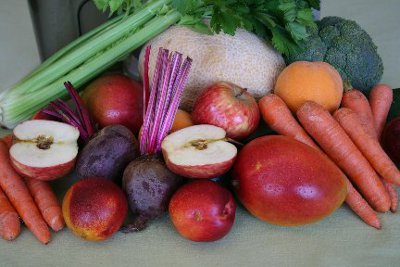 Despite the best intentions, most of us do not succeed in sticking to a totally healthful diet over the holidays. For this reason, the beginning of a new year is a great time for a cleansing program or fast to rid the body of toxins and excess pounds in order to experience renewed energy and a greater measure of health.
Despite the best intentions, most of us do not succeed in sticking to a totally healthful diet over the holidays. For this reason, the beginning of a new year is a great time for a cleansing program or fast to rid the body of toxins and excess pounds in order to experience renewed energy and a greater measure of health.
We all know that filters in cars, heating systems, or other mechanical devices function less efficiently and periodically require cleaning or changing when dirt and “gunk” accumulate. Likewise, a toll is eventually taken on our health and energy levels whenever the function of one or more eliminative channel is diminished or overwhelmed due to accumulated cellular waste and toxins. Just like our homes, these organs and systems of our body need to undergo a thorough housecleaning from time to time to get out toxins that have lodged deep within the tissues of our bodies.
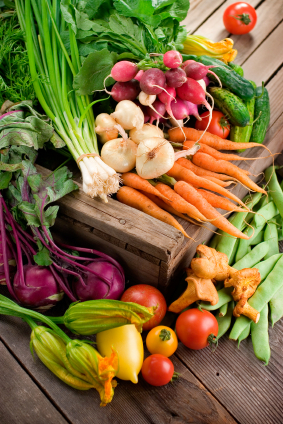 Cleansing the Body through Juice Fasting
Cleansing the Body through Juice Fasting
There are a number of different types of detoxification programs that help cleanse the body of the burden of excess toxins that deplete vital energy and eventually cause degenerative disease. The most basic of these is a fast, one of the oldest and most effective methods of natural healing and detoxification.
For purposes of cleansing and health, juice fasting is recommended over fasting on water alone for several reasons. The absence of nutrients needed to safely break down toxins in the liver with water fasting puts additional strain on this already overworked organ that is so critical to the detoxification process (see “Detoxifying for Better Health – Part 3” for more information on the role of the liver in detoxification). Anti-oxidants and other nutrients and enzymes supplied by juice fasting, however, power the detoxification phases of the liver and supply the body with what it needs to repair cells, heal organs and protect tissues from free radicals generated by the detoxification process.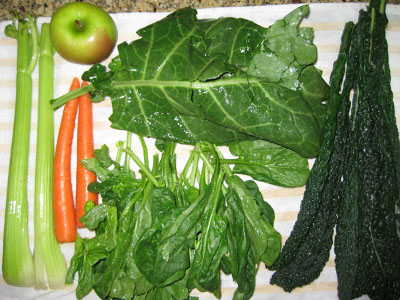
Another benefit of juice fasting is that it does not throw the body into a state where it is forced to burn muscle tissue for fuel as occurs with fasting on water alone. A further disadvantage of water fasting is that it slows down a person’s metabolic rate and tends to cause them to gain significant amounts of weight after the fast is over. Juice fasting, on the other hand, is more able to facilitate the shedding of excess toxic fat. The function of the colon, the primary organ of elimination for removing toxic waste from the body, also tends to shut down more when a person fasts on water alone, which is not a healthy scenario for optimal detoxification.
The Benefits of a Cleansing Fast
Fasting affords many wonderful benefits that affect a person physically, mentally, emotionally and spiritually. Physically, it works in many ways to enable the body’s detoxification mechanisms to focus energy and efforts on getting rid of accumulated toxins by giving the digestive system and body a much needed rest from energy expended on digesting, absorbing and assimilating food. A cleansing fast breaks down stored or circulating toxins and enhances the elimination of toxins from the colon, kidneys, bladder, lungs, sinuses and skin. Flushing out toxins prevents them from weakening tissues or organs or being stored in fat deposits, cysts or growths.
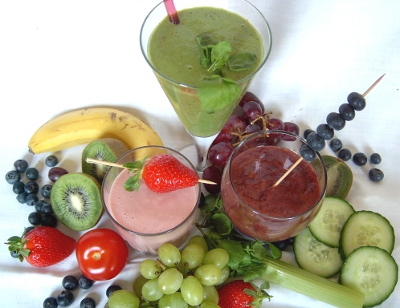 Moreover, freeing the body’s cells from toxins allows them to take in greater amounts of nutrients and oxygen, while eliminating waste and cellular debris more efficiently. Energy production within the cell is then increased, which helps in overcoming lethargy and fatigue. Fasting also enables the liver to convert stored glycogen into glucose and energy. In addition, it helps reverse the breakdown and degeneration of tissues caused by acidity from an overly acidic diet by balancing pH levels through increased alkaline food intake.
Moreover, freeing the body’s cells from toxins allows them to take in greater amounts of nutrients and oxygen, while eliminating waste and cellular debris more efficiently. Energy production within the cell is then increased, which helps in overcoming lethargy and fatigue. Fasting also enables the liver to convert stored glycogen into glucose and energy. In addition, it helps reverse the breakdown and degeneration of tissues caused by acidity from an overly acidic diet by balancing pH levels through increased alkaline food intake.
Giving the body a rest from its normal digestive processes is also extremely beneficial for healing, especially considering many ailments arise from poor diet and lifestyle choices. Nature provides a clear illustration of the benefits of fasting to promote healing when the body is not well. When an animal is sick, it generally attempts to retreat to a secluded place where it can rest, drink water and cease from eating until it feels better. The experience of sickness or disease is just one way that our body tries to tell us that we are in need of cleansing. Unfortunately, instead of listening to what our body is trying to tell us, we tend to put undo stress on it by continuing our level of activity and food consumption. Medications people commonly take when they are sick only add to the toxic load of the liver whereas nourishing the body with juice fasting gives it the support it needs to help detoxify from the root causes of the illness.
The end results of detoxification through a cleansing fast are numerous. Listed below are some of the more common benefits experienced by those who practice fasting:
- Supercharged energy
- Clearer thought processes
- Weight loss
- Clearer skin
- More restful sleep
- Reduction of chronic pain
- Lessening of allergy induced symptoms
- Freedom from bondages of the flesh
- Increased spiritual awareness
- Easier ability to make healthful diet and lifestyle changes
The Best Times and Ways to Fast
Some proponents of fasting for the purpose of detoxification and improving health believe that the body has natural cleansing cycles that coincide with the changing of the seasons. In his book The New Detox Diet, Dr. Elson Haas recommends spring and fall as the best times for an extended cleansing fast, although he acknowledges that the start of a new year can also be an appropriate time when people feel the need to cleanse after the holidays. 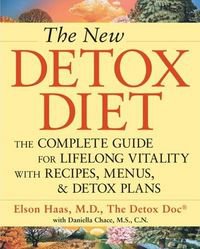
Dr. Haas recommends that those who are unaccustomed to fasting begin with a “one-meal-a-day” plan over a period of several days in which only one meal a day is eaten, usually around 3 p.m. Fresh juices, herb teas and fresh fruit or vegetable snacks can be eaten at other times of the day. He then suggests progressing to a 24 or 36 hour fast of just juices, water, broth or herb teas, which could continue to be practiced weekly or a person may progress to a three day fast, which could be practiced once a month. Either are good ways to give the body a regular break from the processing of foods and a chance to do a little housecleaning and repair. Starting a fast at the beginning of a weekend is recommended to allow a person to get extra rest they may need for the first days of the fast, which tend to be the most difficult.
For the extended spring fast, Dr. Haas recommends using the juice of more citrus-type fruits along with greens or doing the “Master Cleanse” program (more on this cleanse in a section to follow). Soup broths and herb teas may be used along with the juices diluted with water. Ideally, the duration would be ten days for this type of fast although a period of three or more days is still very beneficial. In the fall, he suggests a fast with fresh fruits and vegetables in season over a period of three to five days. Winter fasts could consist of what he calls “warming diets,” in which brown rice, vegetables and vegetarian soups are consumed along with water and herb teas. Summer is an easier time to do longer fasts when the weather is warmer and there is plenty of “in season” fresh fruits and vegetables to juice. Fasts may also be conducted using “smoothie” recipes made with a blender. Drinking plenty of pure water to help flush out the system is recommended for all types of fasts.
Recipes for fresh vegetable and fruit juices, smoothies, hot and cold drinks along with healthy soups, salads, and meal recipes, all of which support detoxification of the body, are included in The New Detox Diet book. Daily menu plans are included for a number of different types of purifying detoxification diets, including ones specifically designed to help a person detox from sugar, caffeine, alcohol, drugs or nicotine. I would highly recommend this book as a helpful guide for those who are seriously interested in detoxifying their body and continuing with eating a non-toxic diet.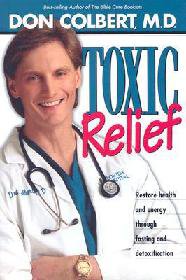
Preparing to Fast
Taking a week or so to discontinue unhealthy food consumption or habits such as sugar, coffee, alcohol and nicotine is helpful before beginning any type of fast. In his book Toxic Relief, Dr. Don Colbert recommends adhering to a diet that specifically supports the liver approximately two weeks before the start of a serious detoxification fast. In addition to eliminating the items already mentioned, he recommends avoiding over-the-counter or other medications that are not medically essential and cutting back on meats, dairy products and saturated fats, especially cheese and marbled meats. Free-range poultry, grass fed lean beef, and fatty fish (salmon, herring, halibut and mackerel) in smaller amounts would be the best choices for meats during this preparation time. For dairy products, he suggests skim milk, plain organic yogurt or kefir and small amounts of organic butter. Bottled, canned or processed juices that are pasteurized are not recommended. Soft drinks should also be avoided along with coffee and alcohol. Other items that are hard on the liver and should be avoided during this pre-fast time period are:
- Fried foods
- Fatty meats, animal skins
- Hydrogenated fats of any type
- Nuts
- Breads or baked goods
- Chocolate
- Wheat and corn products (rice is better)
Foods that best support the liver and the cleansing process are:
- Fresh fruits
- Fresh vegetables (Dr. Colbert indicates beets, carrots, dandelion root and dandelion greens are particularly beneficial for the liver in cleansing)
- Greens
- Whole grains (cooked and sprouted)
- Raw seeds, sprouted seeds or legumes eaten fresh in salads
- Herbs
- Good fats (extra virgin olive oil, avocados, raw fresh nuts and seeds, flaxseed oil, evening primrose oil, black currant seeds oil, borage oil, and fish oil)
Both The New Detox Diet by Dr. Elson Haas and Toxic Relief by Dr. Don Colbert contain many juicing recipes made with either a juicer or blender. Fruits, vegetables and other ingredients often called for in these recipes are carrots, celery, beets, dandelion greens, tomatoes, parsley, spinach, collard greens, cabbage, alfalfa sprouts, ginger root, garlic clove, apples, oranges, kiwi, lemons, limes, berries, cantaloupe, cherries, and pineapple, just to give you an idea of what types of produce you may want to obtain. Dr. Colbert strongly recommends that at least one juice drink a day contain cabbage or broccoli and that one contain beets to support liver detoxification and enhance the flow of bile. I would highly recommend Dr. Colbert’s book, Toxic Relief for detailed instructions on the basics of juice fasting and suggested juicing recipes.
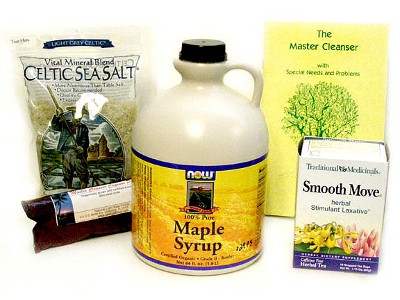 The Master Cleanser Fast
The Master Cleanser Fast
“Master Cleanse” is a very simple and easy to make cleansing drink used for both detoxification and weight loss. Its only ingredients are pure water, fresh lemon juice, cayenne pepper and 100% organic maple syrup (preferably Grade B due to its higher mineral content). It was originally designed as a stomach ulcer cure in 1940 by Stanley Burroughs, an alternative health care practitioner. It was published many years later in his book The Master Cleanser as a solution for nearly any disorder, based on the assumption that most disease stems from a toxic body. In 2004 the popularity of this cleanse was revived by Peter Glickman, who published a more understandable version of it in a book called Lose Weight, Have More Energy and Be Happier in 10 Days. He called this cleansing drink “The Lemonade Diet.”
Unlike water fasting, that only cleanses the body but does nothing to nourish it, the fresh lemon juice in the “Master Cleanse” provides the body with a rich source of vitamins and minerals as well as a means of breaking up mucus in the body. Genuine maple syrup contributes even more minerals in addition to providing sugar for sustaining energy levels through the cleansing process. Cayenne pepper breaks up mucus, warms the body and helps to cleanse the digestive, respiratory and circulatory systems, as well as providing some B and C vitamins.
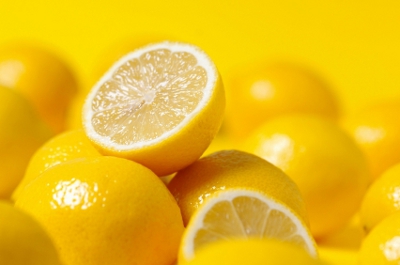 The original recipe for the drink called for two tablespoons of the maple syrup but Dr. Elson Haas, Dr. Don Colbert and others recommend reducing the amount of the maple syrup to lessen the amount of sugar and calories in the drink (if a person is feeling particularly weak at any time during the fast, the amount of maple syrup may be increased). An adapted variation of the recipe is as follows:
The original recipe for the drink called for two tablespoons of the maple syrup but Dr. Elson Haas, Dr. Don Colbert and others recommend reducing the amount of the maple syrup to lessen the amount of sugar and calories in the drink (if a person is feeling particularly weak at any time during the fast, the amount of maple syrup may be increased). An adapted variation of the recipe is as follows:
- 2 tablespoons fresh squeezed lemon juice (approximately half of a lemon)*
- 1 tablespoon organic Grade B maple syrup (blackstrap molasses is recommended for those with hypoglycemia or diabetes)
- 1/10 teaspoon cayenne pepper (can gradually be increased to 1/8 teaspoon or more)
- 8 – 10 ounces filtered water
* Note: remove lemons from the refrigerator and allow them to come to room temperature before juicing as needed enzymes remain dormant at refrigerator temperatures.
Those who weigh less need only consume 6-8 glasses per day of this drink while those weighing 150 pounds or over should consume 8-12 glasses per day. Since the drink has no fiber, most programs recommend natural herbal laxative supplements and/or teas and a salt water flush to speed up the detoxification process and increase elimination of the toxic waste. It is essential that a person eliminates at least once (preferably twice) each day while on the cleanse. You may get information on how to do the salt water flush and other more detailed information about this cleanse by going to www.themastercleanse.org or other websites that contain information on this popular detox and weight loss cleansing program.
 Fasting Guidelines and Precautions
Fasting Guidelines and Precautions
Anyone who is chronically ill should start slowly and gradually with any type of fasting since the body is low on nutrients needed to power the detoxification process. Dr. Haas recommends that those that are in poor health or inexperienced in fasting be monitored with physical exams and blood work by a health care practitioner if they plan to fast more than three days. Prolonged fasting can cause a drop in levels of certain minerals (potassium, sodium, calcium, or magnesium), an increase in uric acid levels due to protein breakdown and a reduction in amounts of blood proteins and blood fats.
Excessive fasting can weaken the body through nutrient depletion and lower resistance to disease. Fasting is not recommended for children or people who are underweight, weak or debilitated, pregnant or nursing or those who have chronic fatigue, low blood pressure, cancer, or cardiac weakness or arrhythmias. It is also not recommended during extremely cold weather or right before or after surgery.
Those whose bodies are especially toxic or who do not normally fast should expect some unpleasant bodily symptoms when they attempt a fast. These symptoms could include headaches, extreme weakness, dizziness or lightheadedness, digestive upset, skin odor or eruptions, thick coating on tongue, fatigue or irritability, disrupted sleep patterns and intense hunger. All of these are common experiences and not a cause for alarm. Increase water consumption and rest as much as possible and the symptoms will subside and should mostly disappear by the third day.
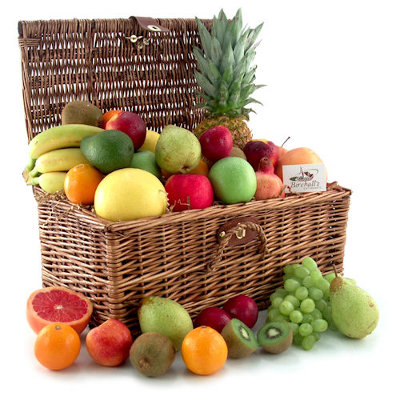 Transitioning Off of a Fast
Transitioning Off of a Fast
As important as preparing the body for a fast is, breaking a fast correctly is even more important for health and a successful detoxification experience. Foods must be reintroduced gradually to prevent negating the benefits gained by detoxification and putting undue stress on the body. Enzymes and hydrochloric acid needed to break down food may not be available right away after being dormant during their digestive “respite.” The longer the duration of your fast, the more time you should allow before resuming normal eating patterns.
For a fast three days or longer, Dr. Colbert recommends eating fresh easily digestible fruits every few hours the first day after the fast is completed. For the second day, eat fruit for breakfast followed by a bowl of fresh vegetable soup for lunch and dinner, taking care to chew slowly and refrain from overeating. Continue to drink water and juices. On the third day, add a baked potato and/or salad to the fruit and soup. One slice of whole grain bread may be added as well by that time. On the fourth day, a very small amount of free-range chicken, beef or turkey may be added to the other foods followed by returning to the liver-supporting transition diet for at least a week. For a one or two day fast, eating the fruit every few hours the first day followed by returning to the liver-supporting diet for a week is adequate.
Next month, we will conclude this series on “Detoxifying for Better Health” by sharing about different cleanses that target detoxification of specific organs of the body. In addition to foods, we will learn about other ways to facilitate more optimal detoxification, including the use of herbs and nutritional supplements known to be highly effective for the process.
Sources:
- Toxic Relief by Don Colbert, M.D.
- The New Detox Diet – the Complete Guide for Lifelong Vitality by Elson M Haas, M.D.
- Coming Clean by Steven Horne, RH AHG
- http://themastercleanse.org/
Copyright © 2008-2015 Lucinda Bedogne, CNHP, CNC
Post Your Comment...
|
|
||||||||||||



